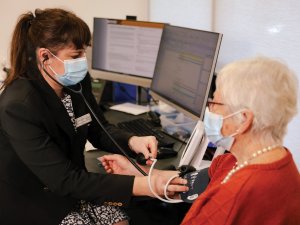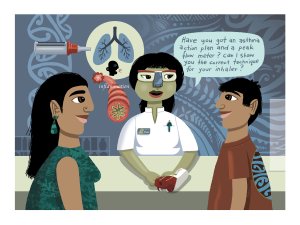Academic pharmacist Nataly Martini discusses the medical management of asthma in adults and adolescents, which has evolved to prioritise early anti-inflammatory treatment. She also explains how to improve patient outcomes by proactively identifying poor asthma control and supporting equitable access to education and treatment
UK pharmacists complain of NHS pinching staff for general practice
UK pharmacists complain of NHS pinching staff for general practice

The English pharmacy sector is begging the NHS to stop stealing community pharmacists to work in general practice after three years of a programme similar to one being proposed here.
In 2019, the UK Government created primary care networks (PCNs): groups of general practices working together to focus on local patient care.
The programme has the goal of growing the primary care workforce by 26,000 by 2024. To achieve this each PCN is funded by the NHS under the Additional Roles Reimbursement Scheme (ARRS) to employ health workers they determine are required to meet the needs of their communities.
As of June this year, there were 3284 full-timeequivalent pharmacists working for PCNs, with all their employment costs including salaries funded by the NHS under the ARRS scheme.
There are 56,943 pharmacists on the UK’s General Pharmaceutical Council register for 2021 and an estimated 70 per cent work in community pharmacy. There are 13,957 registered pharmacies in the UK.
In New Zealand, Te Whatu Ora has proposed funding the salaries of clinical pharmacists working in general practices as part of its move to comprehensive primary care teams.
These are key to the health reforms, and will embed pharmacist prescribers, physiotherapists, clinical care coordinators and others in general practices. A working group is yet to decide whether the funding will pay for all, or part, of their salaries.
The UK Government needs to stop recruiting clinical pharmacists into PCNs, Janet Morrison chief executive of the group negotiating the UK pharmacy services contract, said on 2 October.
The financially incentivised recruitment of pharmacists into these roles is “absolutely shooting community pharmacy in the foot”, Ms Morrison said, according to the UK’s Chemist and Druggist.
General practices should be working with community pharmacies, rather than “recruiting their staff away from them”, Ms Morrison added, later saying the workforce shortage was creating an “existential crisis” for pharmacy.
John Foreman, a New Zealander who co-owns the London-based Green Light Pharmacies, says pharmacists in general practices are mostly funded, so they can offer more to tempt away younger pharmacists from community pharmacies.
“It’s an uneven playing field,” Mr Foreman says by email.
He is aware of many pharmacists who have left retail and hospital pharmacies due to the programme in the UK, including three from his own business. He blames the scheme for creating a workforce shortage in community pharmacy and says it is now very difficult to find staff, and locum rates are “soaring”.
In a letter sent to PCNs in September, NHS England confirmed it would lift the annual maximum reimbursable amount for clinical pharmacists to £59,312 from 1 October, up from £57,318 made reimbursable from April.
The rates are higher for pharmacists working in high-cost areas, rising to £68,768 in these areas.
Back in New Zealand, Martin Hefford, former Te Whatu Ora interim head of the localities and commission, said in August how many clinical pharmacists are needed in primary care, how to fund them and how to make sure they’re embedded properly was being considered.
It has previously been suggested Te Whatu Ora wants about 500 more pharmacists working in general practices across New Zealand.
We're publishing this article as a FREE READ so it is FREE to read and EASY to share more widely. Please support us and the hard work of our journalists by clicking here and subscribing to our publication and website






